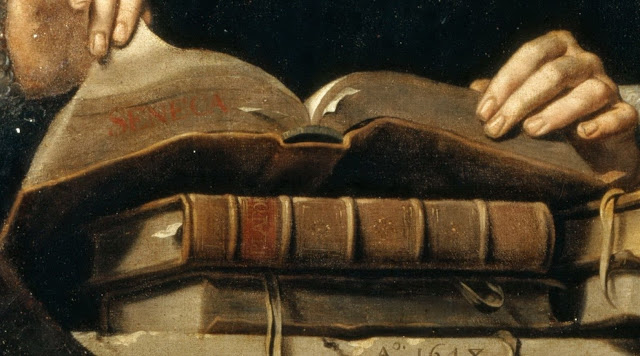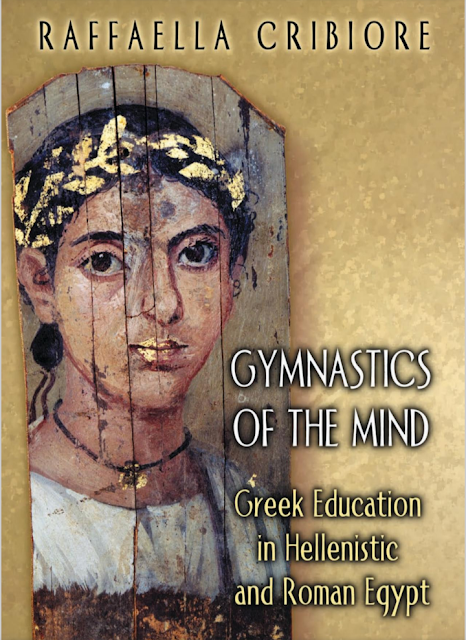My father, who has been reading through the moral letters of Seneca the Younger, alerted me to an interesting passage in Seneca's Letter 95 (ca. 65 AD). In this epistle Seneca is trying to explain a particular aspect of philosophy that Lucilius, the recipient of the work, had asked Seneca to expound upon. He begins the epistle with tongue-in-cheek that Lucilius may be requesting something that he does not really want. To illustrate this Seneca gives an example he thought that Lucilius could relate with (and probably many educated Romans at the time).
"There are many things that we would have men think that we wish, but that we really do not wish. A lecturer sometimes brings upon the platform a huge work of research, written in the tiniest hand and very closely folded; after reading off a large portion, he says: "I shall stop if you wish;" and a shout arises: "Read on, read on!" from the lips of those who are anxious for the speaker to hold his peace then and there." (Ep. 95.2)
The portion of the illustration that I zeroed in upon had to do with the description of the "research" that was being read by the lecturer. I give it in English and in the Latin below.
"A lecturer sometimes brings upon the platform a huge work of research, written in the tiniest hand and very closely folded"
"Recitator historiam ingentem attulit minutissime scriptam, artissime plicatam."
When I first read this reference I immediately wondered if Seneca could be describing a codex. The English translation states that the book was "closely folded," which gives the impression of folded pages. At first glance, this wording gives the impression of a compact, tightly folded codex that was written in a small script. This English translation is not unlike the phrase Martial uses to describe a codex.
"You who wish my poems should be everywhere with you, and look to have them as companions on a long journey, buy these which the parchment confines in small pages. Assign your book-boxes to the great; this copy of me one hand can grasp."
"Et comites longae quaeris habere viae, Hos eme, quos artat brevibus membrane tabellis: Scrinia da magnis, me manus una capit." (Epigr. 1.2)
It is pretty clear that Martial is referring to a parchment codex that is compact in size and contains a great deal of written material. His use of "brevibus membrane tabellis" makes this explicit as "membrana" is referring specifically to it's material, animal skin, and also it's form. Quintilian, uses the same word for his obvious description of a parchment codex in Institutio Oratoria 10.3.31. Martial also employs the word "tabellis" which was a common term for the ancient writing tablet.
On a closer examination however, it appears that Seneca does have a Roman bookroll in view. He uses the term "historiam," which is obviously the classic term used for a work of history and this type of work would have been more at home in the Roman bookroll in the first century. Most interesting is that Seneca is attempting to describe the density and detail of this work of literature.
First, by noting that the script is written in a small hand, "minutissime scriptam," which means that more written material could fit in the physical medium of the book.
Second, he indicates that the book is, "artissime plicatam." The adverb "artissime" is the superlative form of "artus," having the meaning of; close, strait, narrow, confined, short, brief. Together with the verb, "plicatam," the perfect passive participle of "plico"; to fold, to lay or wind together, to fold up, double up. The translator chose to use the sense of "folding," yet the verb can also have the sense of "coiling" or "winding" like a snake. Thus the verb can be used to described the coiling up action of winding a bookroll.
These descriptors help to paint the picture of a very large quantity of research material almost forcefully confined within a single bookroll by using very small handwriting, and tightly winding the parchment into a compact bookroll. When compared with the description Martial gives for the codex, this history looks to have been an unwieldy object!
_______________________
Martial, Epigrams (Walter C. A. Ker, trans. Vol. 1. LCL. London: William Heinemann, 1919).
Seneca the Younger, Ad Lucilium Epistulae Morales (Richard M. Gummere, trans. Vol. 3. LCL. London: William Heinemann, 1925).
The Latin definitions are derived from;
A Latin Dictionary. Founded on Andrews' edition of Freund's Latin dictionary. revised, enlarged, and in great part rewritten by. Charlton T. Lewis, Ph.D. and. Charles Short, LL.D. Oxford. Clarendon Press. 1879.

























